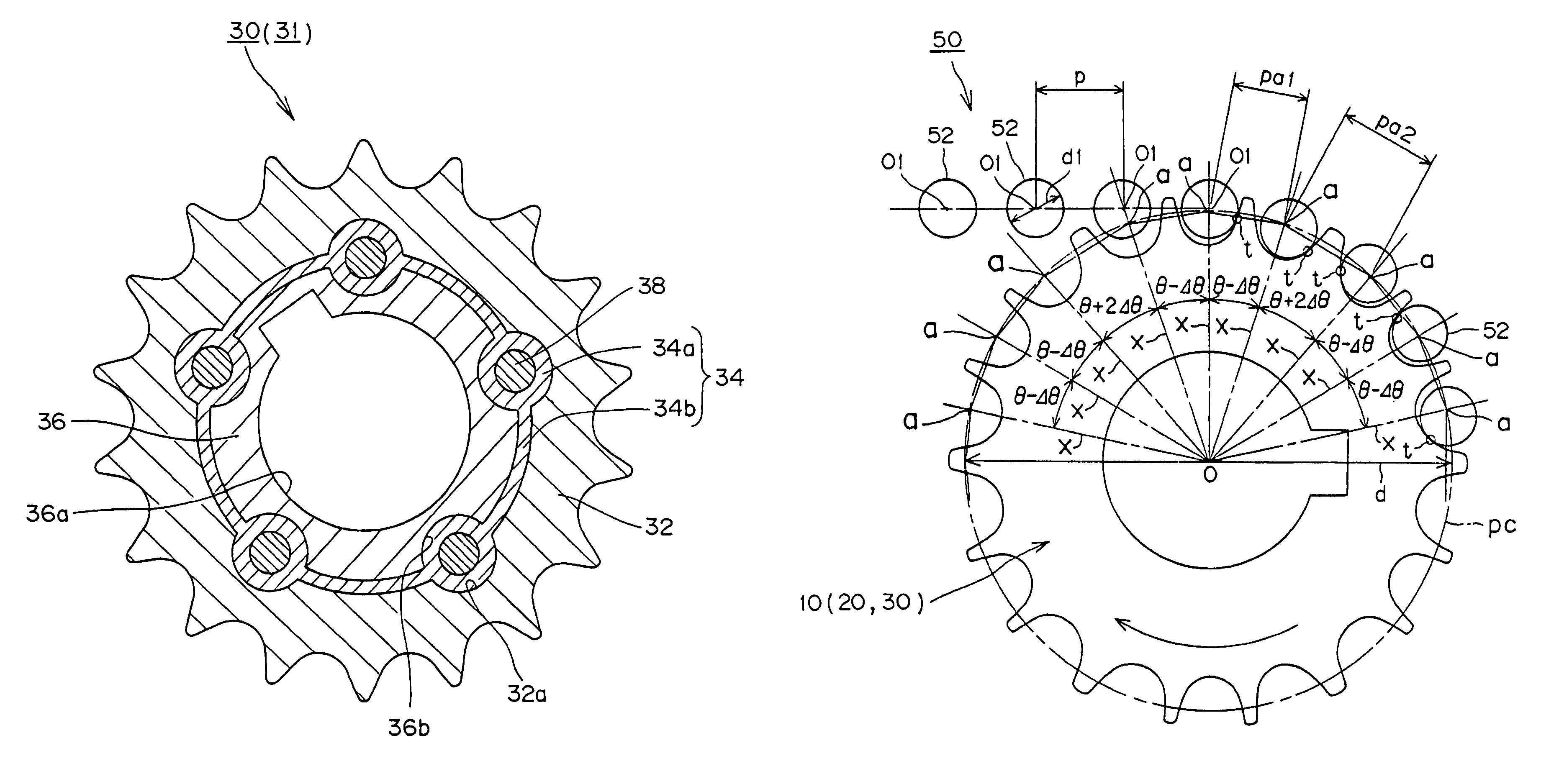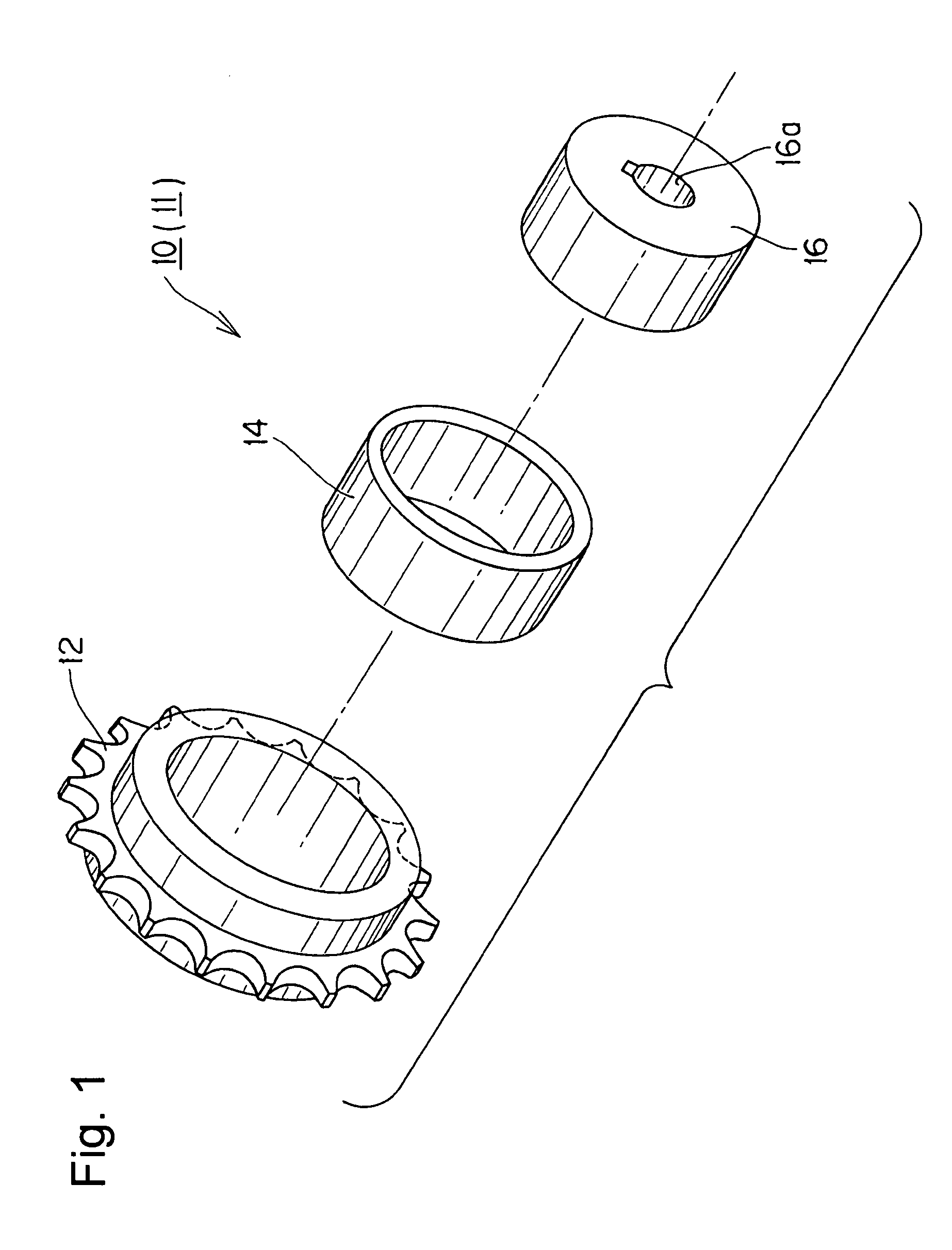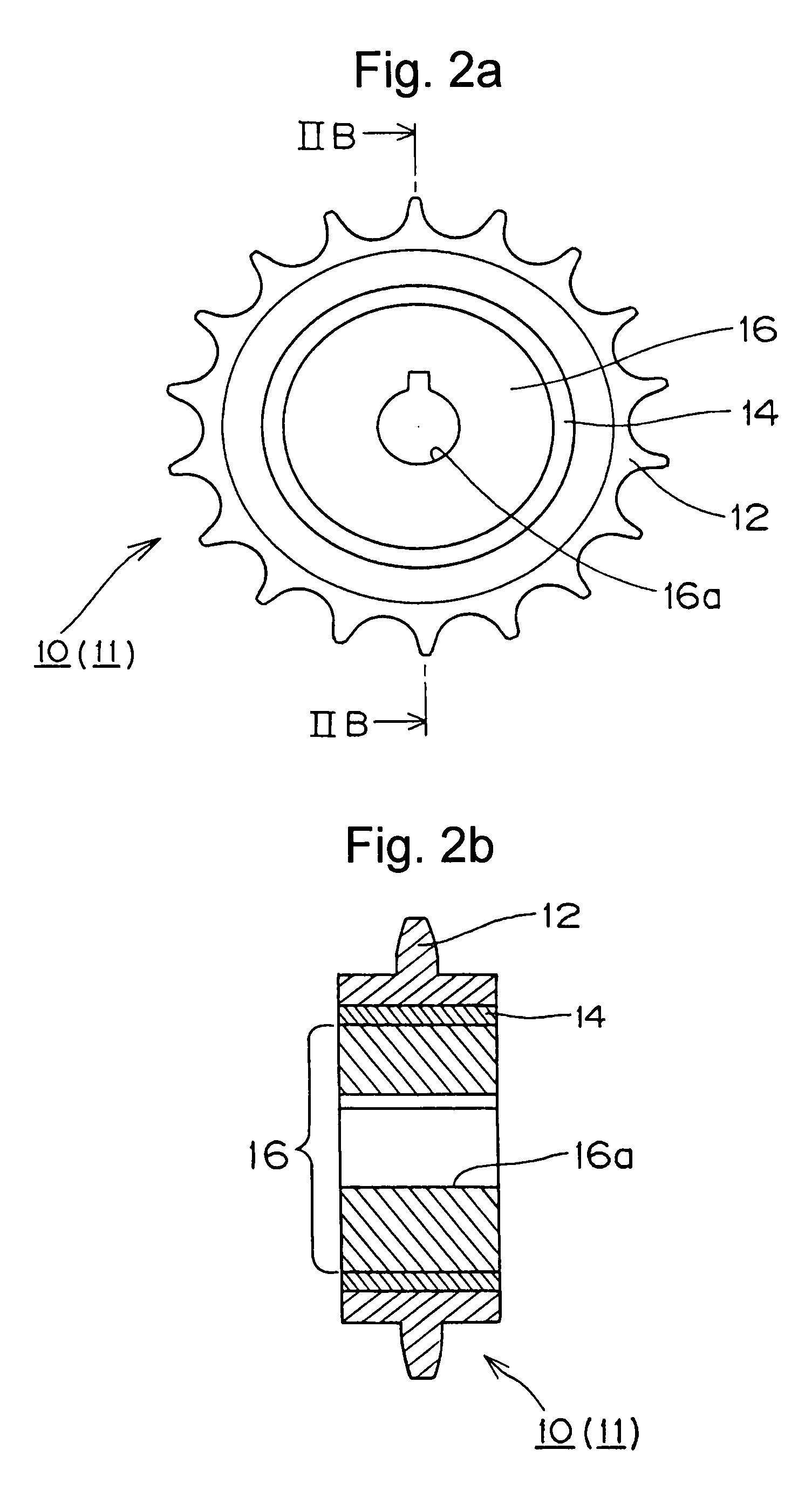Chain transmission device
a transmission device and chain technology, applied in the direction of gearing, gearing elements, hoisting equipments, etc., can solve the problems of inability to adequately reduce the noise of timing transmission, the elastic member is found to be incapable of reducing these noises and vibrations, and achieves the effect of reducing the overall impact force applied to the elastic member, improving the endurance of the elastic member, and reducing the overall impact for
- Summary
- Abstract
- Description
- Claims
- Application Information
AI Technical Summary
Benefits of technology
Problems solved by technology
Method used
Image
Examples
first embodiment
[0028]As shown in FIGS. 1, 2(a) and 2(b), in the invention, an elastic member 14 is attached to an inner hub 16 of the sprocket. The hub includes a keyed shaft-receiving hole 16a, to which a shaft (not shown) can be fitted. An outer circumferential member 12, on which the sprocket teeth are formed, surrounds the elastic member 14. The elastic material can be resin, rubber, metal or the like, but the material of the elastic member should have a Young modulus smaller than that of the outer circumferential member 12.
[0029]The sprocket 10 can have two different tooth form pitch angles, θ−Δθ and θ+2Δθ. The tooth form pitch angle θ−Δθ is smaller than a standard pitch angle θ by an angle Δθ, and a tooth form pitch angle θ+2Δθ is larger than the standard pitch angle θ by two times the angle Δθ. In order to allow engagement of the chain rollers with the sprocket teeth, Δθ must not be greater than ¼ the standard pitch angle θ (that is, Δθ≦θ / 4). Specifically, if the sprocket 10 has eighteen te...
second embodiment
[0034]A chain transmission according to the invention will now be described with reference to FIGS. 3, 4(a), 4(b), and 8. As apparent from FIGS. 3, 4(a) and 4(b), an elastic member 24 is attached to an outer circumferential member 22, on which teeth 22a are formed for engagement with the rollers or bushings of a chain. The elastic member 24 is composed of a material having a Young's modulus smaller than that of the outer circumferential member 22.
[0035]As in the case of the sprocket 10 of FIGS. 1, 2(a) and 2(b), the sprocket 20 has two different tooth form pitch angles θ−Δθ and θ+2Δθ, as shown in FIG. 8. Since the tooth form pitch angles are arranged irregularly along the circumferential direction of the sprocket's pitch circle, the sprocket's vibration-reducing performance and the endurance of the elastic member are improved, and, at the same time, vibration and noise having an order determined by the number of sprocket teeth, are reduced even though they could not be effectively r...
third embodiment
[0036]In the sprocket of a chain transmission according to the invention, as shown in FIGS. 5 and 6, an elastic member 34 is sandwiched between an inner circumferential hub 36 and an outer circumferential member 32 on which sprocket teeth are formed. The hub has a keyed shaft hole 36a to which a shaft can be fitted. The elastic member 34 is composed of a material such as resin, rubber, metal, or the like, having a Young's modulus lower than that of the outer circumferential member 32.
[0037]The elastic member 34 is formed with a plurality of spaced cylindrical portions 34a, disposed at equal intervals around the circumference of the elastic member. The cylindrical members are connected by arc-shaped plates 34b. The elastic member 34 is sandwiched between the outer circumferential surface of the hub 36, and an inner circumferential surface of the toothed outer circumferential member 32. The cylindrical portions 34a are fitted between opposed concave grooves 36b and 32a, respectively d...
PUM
 Login to View More
Login to View More Abstract
Description
Claims
Application Information
 Login to View More
Login to View More - R&D
- Intellectual Property
- Life Sciences
- Materials
- Tech Scout
- Unparalleled Data Quality
- Higher Quality Content
- 60% Fewer Hallucinations
Browse by: Latest US Patents, China's latest patents, Technical Efficacy Thesaurus, Application Domain, Technology Topic, Popular Technical Reports.
© 2025 PatSnap. All rights reserved.Legal|Privacy policy|Modern Slavery Act Transparency Statement|Sitemap|About US| Contact US: help@patsnap.com



